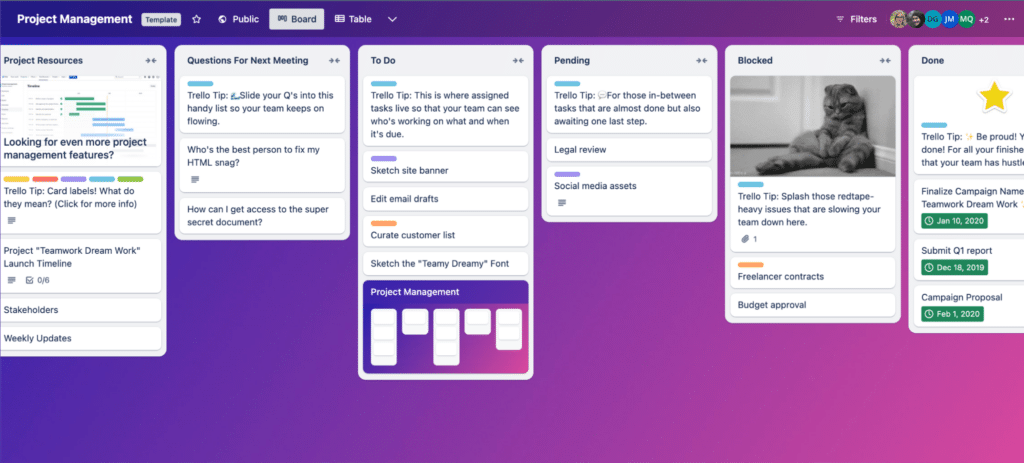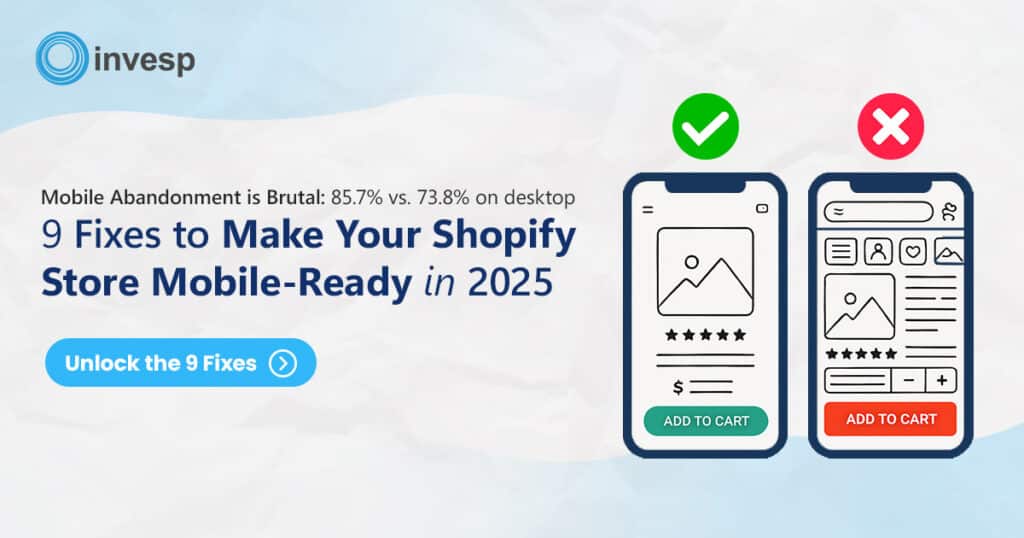The competition is severe, and every click counts.
One way to turn mere visitors into buying customers is through Conversion Rate Optimization (CRO). It’s an indispensable part of digital marketing that helps you retain older customers and ensures website visitors don’t abandon your web pages, landing pages, or the cart.
However, like every process, the CRO process involves careful planning and a well-structured approach.
That’s where project management comes in. It gives you and your team a proper step-by-step blueprint for implementing the CRO steps. Let’s discuss this in more detail.
Role of Project Management in Conversion Optimization
Will you ever build a house without a blueprint?
Of course not. Otherwise, it will be nothing but chaotic.
Conversion optimization without project management consists of scattered ideas, experiments, and data with no clear direction.
A structured approach, on the other hand, is like having that blueprint. It gives you a roadmap for your CRO journey, guiding you from ideation to implementation to analysis.
Benefits of Applying Project Management Principles in CRO
Now, let’s talk about why those project management principles we learned in school are so valuable for CRO:
- Improved Efficiency: When you break down your CRO process into smaller, manageable tasks, it becomes easier to follow through each step. They become less overwhelming and, hence, more efficient.
- Better Resource Allocation: Project management helps you allocate your resources—time, budget, and workforce—where they’ll have the most impact. This eliminates resource wastage on experiments that won’t show tangible results.
- Enhanced Collaboration: A well-structured project promotes collaboration among team members. This way, everyone understands what the overall goals are, making it easier to communicate and work toward the same outcomes.
- Data-Driven Decision-Making: Project management helps you track and analyze data, resulting in data-driven decision-making. You no longer have to rely on guesswork—you now have a complete account of past and current data to decide which experiments will likely give better results.
Key Elements of a Conversion Optimization Project
Let’s break down the critical elements of a conversion optimization project.
Setting objectives and KPIs
Setting clear and measurable objectives and key performance indicators (KPIs) is the first step for a successful conversion optimization project.
Objectives will help you define and document your goals, while KPIs measure progress toward those goals.
Here’s how you can make it easier to set practical objectives and KPIs
- Make Objectives SMART: Specific, Measurable, Achievable, Relevant, and Time-bound.
- Align with Business Goals: Objectives should support broader business strategies.
- Prioritize KPIs: Focus on metrics directly impacting your site’s conversion rate, like click-through rates, conversion rates, and average order value.
Research and analysis
Understanding customer behavior and preferences is an integral part of conversion optimization. You cannot effectively optimize your site without a good grasp of your target audience’s behavior and preferences.
Research and analysis provide the data needed to make those informed decisions.
Quick tips for conducting research and analysis:
- Use Analytics Tools: Google Analytics, FigPii, and similar tools can provide insights into user behavior.
- Conduct User Surveys: Direct user feedback helps identify pain points and areas for improvement.
- Analyze Competitors: Study what competitors are doing well and where they fall short.
Hypothesis development
Developing hypotheses provides a structured way to test ideas and improve conversion rates. A hypothesis is an educated guess about what change will improve performance.
Quick tips for hypothesis development:
- Base on Data: Use insights from research and analysis to form hypotheses.
- Be Specific: Clearly define what you will change and what outcome you expect.
- Prioritize Hypotheses: Test the most impactful ideas first.
A/B testing and experimentation
A/B testing allows you to compare two versions of a landing page, web page, or app to see which performs better. This is crucial for validating hypotheses and making data-driven decisions.
Here are some best practices to succeed in your testing program:
- Test one variable at a time. Isolate changes to understand their impact.
- Ensure sufficient sample size. Ensure your split testing has enough participants to produce statistically significant results.
- Run tests long enough. Allow tests to run for a sufficient period to account for variations in user behavior.
Planning and Execution
Project planning sets the stage for success by providing a clear roadmap for the team.
It helps the entire team to understand the project’s goals, timelines, and deliverables, minimizing confusion and maximizing efficiency.
Here’s a complete overview of the entire process that will help you skyrocket your website’s conversion rate.
Project Planning Steps:
First, you define your destination (project goals) and map out your route (project scope).
This involves:
- Defining clear objectives. Clearly outline what you want to achieve with your conversion optimization project. Are you looking to reduce your cart abandonment rates?
- Gathering your crew. Identify your key stakeholders so you know who is involved in the project, who stands where in the hierarchy and authority, and who team members should report to.
- Identifying scopes and deliverables. Define what the project entails and what’s not part of it.
- Set a realistic timeline. Set a timeline with clear milestones to set expectations and track progress.
Pro Tip: Divide the overall project objectives into smaller, manageable tasks.
Assign specific tasks to team members, just like a captain delegating responsibilities to their crew. Tools like Trello or Asana can help keep everyone on track.

Resource Allocation
Time to figure out your budget, workforce, tools, and time, then distribute them wisely.
Resource allocation ensures that you make the most of your budget, time, and workforce, maximizing your chances of success.
- Prioritize tasks. Focus on high-impact tasks that are aligned with your objectives.
- Allocate the budget wisely. Invest in tools and resources that will yield the best results.
- Make use of existing resources. Use internal resources and expertise to reduce costs.
- Regularly review resource allocation. Continuously assess your resource allocation to ensure it aligns with project needs.
In a nutshell, here’s what the planning and execution phase entails:
- Clear Goals: Define your project’s purpose and what you want to achieve.
- Thorough Research: Analyze data to identify areas for improvement.
- Strategic Planning: Map out your project timeline, allocate resources, and assign tasks.
- Efficient Execution: Use tools and collaboration to keep your project on track.
Setting Timelines and Milestones
A clear timeline with specific milestones helps keep the project on track and ensures everyone is working towards the same goals. It also avoids delays and miscommunication related to deliverables.
But ensure you set realistic deadlines—don’t forget to account for any potential delays.
Implementation and Testing
This phase is where your well-laid plans become a reality.
Here’s what it involves:
- A/B or Multivariate Testing: You put your hypotheses to the test by creating different versions of your webpage or app to see which one performs better.
Implementation of Winning Variations: Once your tests are complete and you’ve identified the winning variations, it’s time to implement those changes on your site.

Make sure you start with minor changes.
Don’t try to tackle everything at once. Start with one or two elements and test their results before experimenting site-wide. This will help you avoid making the same mistakes on every element on your site.
During testing, monitor your KPIs to identify unexpected results and make appropriate adjustments.
Finally, don’t be afraid to iterate. CRO is an ongoing process. Even after implementing the winning variations, continue to test and refine your site to ensure it’s always performing at its best.
Monitoring and Reporting
Your monitoring and reporting phase is where you gauge whether your experimentation efforts resulted in progress. It will also give you an idea of what’s working and what’s not so you can make changes accordingly.
Tracking Progress and Performance:
This involves keeping tabs on your KPIs—those metrics you identified at the beginning of your project.
Are you seeing an increase in conversions? Are visitors spending more time on your site? Are they abandoning the cart or completing the sales?
Here are some tips for effective monitoring and reporting:
- Use A/B testing tools: These tools can automatically track your KPIs and show you how your variations perform.
- Set up custom dashboards: Most analytics platforms (like Google Analytics) allow you to create custom dashboards that display the most critical metrics for your CRO project. This gives you a quick snapshot of your progress.

Data analysis and interpretation
Now that you’ve collected your data, it’s time to analyze it and determine what it means.
This is where you dig deep into the numbers to make sense of the data and uncover easily comprehensible insights and trends.
How will you go about it? Here are some tips:
- Look for patterns: Are certain pages or elements on your site performing better than others? Why might that be?
- Compare results: How do your A/B test results compare to your initial data? Are the changes you made had a positive impact?
- Don’t be afraid to get creative. Sometimes, the most interesting insights come from examining the data in new and unexpected ways.
Regular reporting and updates
Communication is vital in any project, and CRO is no exception.
Keeping your team and stakeholders informed about your progress, challenges, and successes is essential. This helps everyone stay updated and motivated. It’s like giving a halftime pep talk to your team—you need to keep them fired up and focused on the goal.
Here are some quick tips to carry it through:
- Set a regular reporting schedule. Depending on the length and complexity of your project, this could be weekly, bi-weekly, or monthly.
- Keep it concise: Focus on the most important takeaways and actionable insights. Don’t overwhelm your target audience with too much data.
- Use visuals: Charts, graphs, and other visuals can make your data easier to understand and digest.
Over to You!
At Invesp, we have covered dozens of articles about CRO, including CRO best practices and strategies. But what goes on behind the scenes in the optimization process?
This is where project management in conversion rate optimization comes into the picture.
From setting clear objectives and analyzing data to implementing changes and monitoring results, project management ensures that your team implements best practices properly and maximizes resources and time.
If you find the process overwhelming, you can leave it to professionals and rely on expert CRO agencies to handle everything on your behalf.



